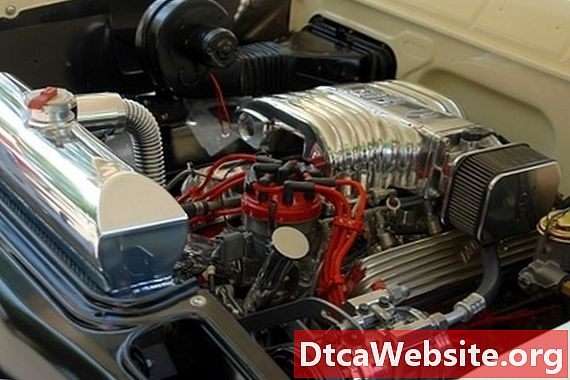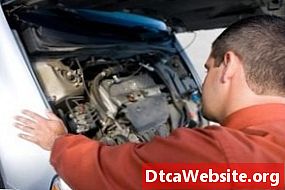
Contenu

A cars engine is like a delicate ballet or a synchronized swimming event; everything must work in perfect harmony or the whole thing is thrown off. An engine, however, does not just get up and start over. It typically causes major damages when all of its components are not working properly. One thing that can happen is that the engine can seize. Seizing of the engine is when a major component stops moving, stopping the entire engine.
Nothing
When an engine seizes, the tell-tale sign is nothing. You attempt to turn the vehicle over, and all of the electronics seem to work: radio turns on, heater fan blows and the lights turn on. When you attempt to crank the vehicles engine though, nothing happens except a loud clunking noise from the vehicles starter impacting the engines flywheel.
Inside-out
When an engine seizes, a lot of times it is due to an internal component coming loose and lodging against another component. Sometimes, this component -- typically a piston connecting rod -- can penetrate the engine block and pierce through to the outside. In some cases, the component that is now piecred through the engine block can be seen from the top.
Burning Wires
When an engine seizes and can no longer move, the starter will still attempt to crank the engine when the key is turned. Because the starter cannot turn the motor, the electric wires can overheat and begin smoking, a tell-tale sign of a seized engine.
Testing
There are a few ways to test for a seized engine, but one procedure stands out as the most reliable. Try to turn the crankshaft pulley on the engine -- the large pulley in the middle of the engine. The best way to do this is to remove all of the spark plugs, place a large socket on the crankshaft pulley bolt and turn the socket with a large breaker bar. If the crank does not move, it is very likely the engine is seized.
Precursors
There are plenty of warnings given before an engine seizes. The initial stages are very light tapping noises or even a faint knocking sound. Youll know the end is near when you hear what technicians call a "dead knock." This is a loud knocking sound that lacks any metallic pinging sound. This "dead knock" is typically the piston connecting rod hitting the engines crank shaft.
Repairing
Repairing a seized engine really depends on what actually caused the seize. Typically, the best mode of repair is to replace the entire engine, as the internal damage may be very heavy. If repairing the engine is best -- high-performance engines or a rare engine -- you can anticipate replacing nearly all of the internal components and having the engine block repaired by a machine shop, both of which are very costly.


